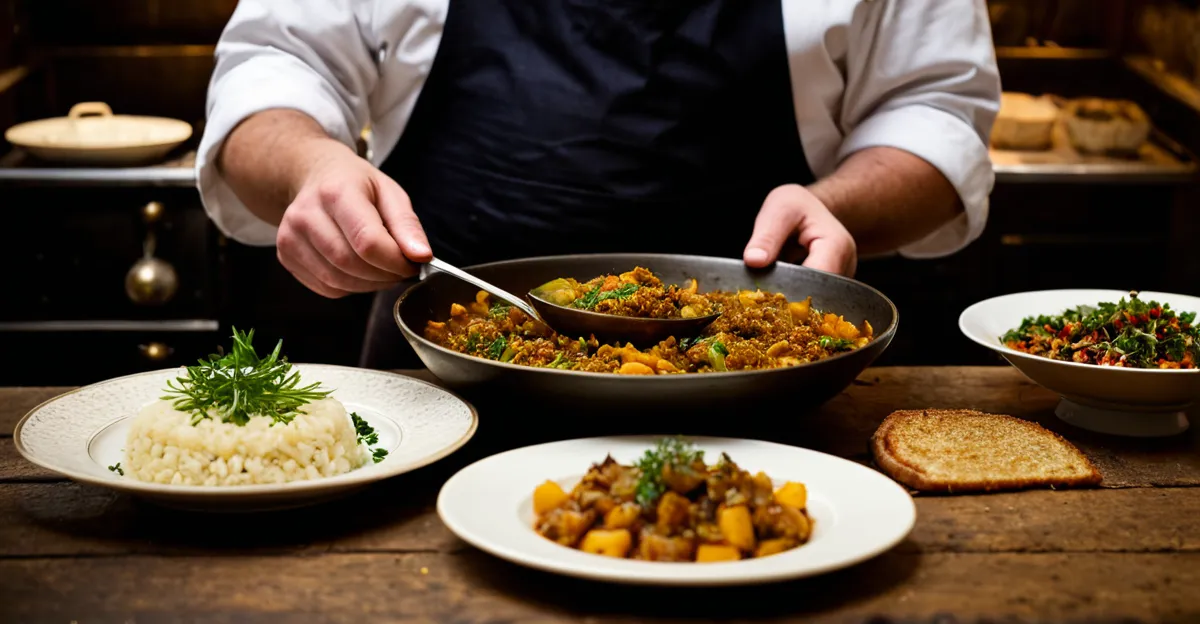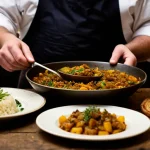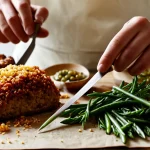Overview of UK Culinary Heritage
British food culture has evolved over centuries, deeply rooted in the vast tapestry of UK culinary history. Traditional British cuisine often carries a reputation for hearty, straightforward dishes, yet this perception only scratches the surface of its rich and varied past. Defining the scope of British culinary history involves appreciating how diverse influences—from ancient agricultural practices to successive waves of migration—have shaped the way food is prepared and enjoyed.
The essence of traditional British cuisine reflects a union of historical, cultural, and economic factors. For instance, local ingredients like root vegetables, beef, lamb, and fish play a pivotal role, while preservation methods such as smoking and pickling highlight adaptations to the UK’s climate and resources. British food culture is also marked by iconic dishes such as roast dinners, pies, and puddings, each with regional variations that tell a story of place and heritage.
This might interest you : British Cooking: What Are the Most Surprising Ingredients Used?
Economic shifts have historically impacted ingredient availability, while cultural customs dictate festive and everyday meals. Understanding British culinary history requires recognizing how these elements intertwine, revealing a cuisine that is both resilient and adaptable. The depth of traditional British cuisine extends far beyond its reputation—it’s a living reflection of the UK’s social fabric and historical journey.
Early Influences: Ancient and Medieval Roots
British food culture owes much to early historical layers that introduced new ingredients and cooking methods. The Roman influence on UK food was profound, bringing items like olives, grapes, and herbs alongside advanced baking and preservation techniques. Romans transformed local diets by incorporating Mediterranean flavors that enriched what would become traditional British cuisine.
Also to read : What are the steps to making an authentic Welsh rarebit?
Before Roman arrival, Anglo-Saxon food relied heavily on locally sourced grains, vegetables, and meats, adapting to the temperate climate and available resources. Their diet centered on simple, earthy fare such as barley bread, stews, and salted fish. Anglo-Saxons contributed foundational food practices appreciated in traditional British cuisine today, like hearty porridges and root vegetable usage.
The Norman cuisine impact after the 1066 conquest brought another significant shift. The Normans introduced medieval feasts with more elaborate ingredients such as game meats, spices, and refined sauces. This period marked the emergence of richer dishes, reflecting social hierarchy and expanding the UK culinary history with complex flavors and presentation styles that influenced future British food culture.
Together, these early influences illustrate how British culinary history continuously evolved, merging diverse traditions that shaped what we now recognize as traditional British cuisine.
The Role of Trade, Exploration, and Globalization
Trade and exploration were pivotal in shaping British food culture, expanding the traditional palate far beyond native limitations. The spice trade’s impact on British food was transformative. Spices like cinnamon, nutmeg, and pepper—once exotic and costly—became integral to many British dishes, adding new layers of flavor that diversified local tastes.
The legacy of the British Empire cuisine is evident in how colonial ingredients were incorporated into everyday cooking. Imports such as tea from India, sugar from the Caribbean, and rice from Asia enriched the cupboard of traditional British kitchens. These introductions created a fusion of tastes, allowing British culinary history to adapt actively to international influences.
This global exchange also accelerated the evolution of iconic dishes. For example, curry’s integration into British cuisine symbolizes how globalization reshaped traditional recipes. Food historian accounts show that such cross-cultural interactions fostered innovation, blending overseas flavors with established British staples.
In essence, the intertwining of exploration, trade, and empire expanded the scope and variety of British food culture. It facilitated a dynamic culinary history defined by openness and adaptation, which continues to influence the UK’s evolving food scene today.
Regional Diversity and the Shaping of Local Dishes
British regional cuisines showcase the remarkable diversity within UK culinary history. Distinct geographic features and climates have fostered unique local ingredients and cooking styles that define traditional British cuisine beyond the national stereotype. For example, Scottish food origins emphasize game, oats, and freshwater fish, with dishes like haggis deeply rooted in Highland culture. Similarly, Welsh traditional dishes often feature lamb, leeks, and seafood, reflecting the region’s coastal and pastoral settings.
Irish culinary influences also contribute substantially, with hearty stews and potato-based meals that speak to the island’s agricultural history. These regional tastes not only preserve local heritage but also reveal how British food culture adapts to environment and resources.
Migration and regional interaction have further shaped these local dishes. As populations moved within the UK, culinary exchange enriched British regional cuisines, blending traditions without eroding distinct identities. The result is a vibrant mosaic of flavors and techniques that exemplify the UK’s dynamic food history.
Understanding regional diversity highlights how the broader category of traditional British cuisine includes a wide array of distinctive, place-based foods that maintain a strong connection to Britain’s natural landscape and historical development. This variation strengthens the overall fabric of UK culinary history.
Cultural, Economic, and Social Forces in British Food Evolution
The trajectory of British food history reflects a deep interplay between cultural norms, economic conditions, and social structures. Food and social status through history reveal that what was consumed often signified class distinction. For example, elaborate medieval feasts displayed wealth with game meats and exotic spices, while the working classes relied on simpler staples like bread and root vegetables. This differentiation influenced the availability of ingredients, as economic shifts often dictated what families could afford.
Economic factors in food have repeatedly shaped British cuisine. Periods of prosperity allowed for richer diets, whereas downturns, such as during wartime, imposed restrictions. Wartime rationing UK cuisine, particularly during World Wars, dramatically limited access to common ingredients. Rationing enforced simplicity and ingenuity, leading to dishes that adapted traditional recipes to resource scarcity without sacrificing flavor entirely.
Social forces also influenced eating habits and traditional recipes, molding the cuisine in response to external pressures and evolving cultural values. British food culture thus embodies resilience and adaptability, with economic hardships and social expectations leaving lasting marks on cooking methods, ingredient selection, and the overall narrative of traditional British cuisine. Understanding these forces highlights how history is actively embedded in the very meals served across the UK.
Modern Influences and the Transformation of Tradition
The evolution of modern British cuisine reflects significant changes brought by multicultural food UK trends and shifting eating habits. Indian, Caribbean, and Asian flavors, introduced primarily through immigration, have profoundly enriched traditional British cuisine. Curry, originally an external dish, has become a staple, illustrating how multicultural influences enhance the UK culinary history.
Food trends UK history highlights growing interest in fresh, locally sourced ingredients paired with international spices and cooking techniques. This blending respects tradition while embracing innovation, shaping a contemporary culinary landscape that is dynamic and diverse.
The introduction of multicultural food UK styles has reshaped menus from casual eateries to fine dining. For example, fusion dishes combining classic British staples with exotic spices illustrate this transformation. Changing British eating habits in the 20th and 21st centuries reveal a society increasingly open to experimenting with flavors and valuing healthy, global-inspired options.
Immigration’s role cannot be understated: it continuously shapes British food culture by introducing novel ingredients and cooking methods. This interaction fosters creativity and inclusiveness, marking a significant chapter in UK culinary history where tradition and modernity coexist, reflecting Britain’s global connections and cultural richness.







